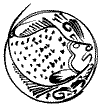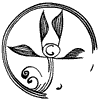| Discovering Asia's ceramic development |
Plates from Sisatchanalai
(left) and China (right). At this stage, China's production technology
appears far superior - but Sisatchanalai will make rapid progress in the
years ahead.
|
This shipwreck was discovered in 42 metres of water, 100 nautical miles from shore. Only the surface of the site has been investigated, but timber samples and construction details indicate that the ship was built in China. She is likely to have been 26 metres long with a beam of 7.5 metres. She was built in the Chinese tradition, with axial rudder, and with frames and hull planks joined by iron nails. The ceramic cargo was found reasonably well stored, in compartments separated by transverse bulkheads.
The Turiang's ceramics comprise Chinese celadon from the famous Longquan kilns, Sisatchanalai early green-glazed jars and bottles (this early green glazed ware is sometimes called celadon, but here we are making a distinction; the photos to left and right show the markedly different glazes), and Sukhothai underglaze fish and flower plates, plus assorted pots from kilns in southern China. Vietnam is represented by its earliest type of underglaze decorated bowls.
Large quantities of Chinese celadon in the Turiang cargo, and none yet found from Sisatchanalai, suggest that the Sisatchanalai kilns were not yet producing celadon, which would later become its most successful export. Until this discovery, it was thought that Sukhothai started underglaze production after Sisatchanalai had developed and exported celadon. The Turiang has forced a rethink.
Tubular supports were used while firing the Chinese celadon: both scars and remnants of the supports can be seen. Tubular supports were adopted at both Sukhothai and Sisatchanalai; this evidence that they were already in use at Longquan suggests that they may have been introduced to Thailand by Chinese potters.
Fish designs show lively variation, but the range of fish motifs from Sukhothai is very similar to the range from Sisatchanalai. The fish which follow are all from Sukhothai, but one could not probably not tell that without seeing the original ceramic. (Then one can tell from the clay and the glaze.)
 |
 |
 |
 |
 |
Flower designs from Sukhothai and Vietnam are similar, but those from Si-Satchanalai are quite different. The three examples on the left are from Sukhothai; the three on the right are from Sisatchanalai.
 |
 |
 |
 |
 |
 |
| Exhibition index |